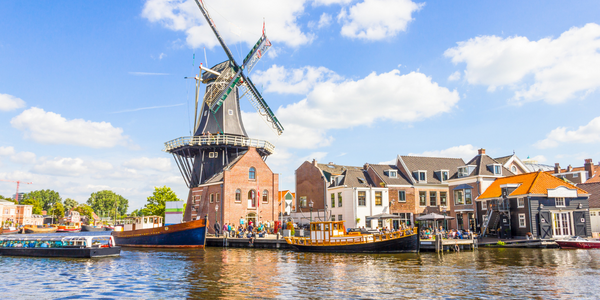下载PDF
How the D.C. Department of Public Works Got More Operational Efficiencies Out of their Street Sweeping Program
技术
- 分析与建模 - 预测分析
- 功能应用 - 车队管理系统 (FMS)
适用行业
- 城市与自治市
- 回收与废物管理
适用功能
- 设施管理
- 物流运输
用例
- 车队管理
- 过程控制与优化
服务
- 软件设计与工程服务
- 系统集成
挑战
As anyone who’s driven the unique streets of the nation’s capital can attest to, Washington, D.C. can be a complex city to navigate. Traffic circles, lane restrictions and even direction changes based on time of day are all factors to consider. As the organization responsible for the District’s environmental services, solid waste management and parking enforcement, the D.C. Department of Public Works (DCDPW) faces these challenges every day – especially when it comes to keeping the streets clean. D.C.’s mechanical street sweeping program is one of the largest in the country for a city its size. However, the program was operating with 15-year-old routes that had been manually created and expanded over the years.
关于客户
The D.C. Department of Public Works (DCDPW) is responsible for the District’s environmental services, solid waste management, and parking enforcement. They manage one of the largest mechanical street sweeping programs in the country for a city of its size. The department faces unique challenges due to the complex layout of Washington, D.C., which includes traffic circles, lane restrictions, and direction changes based on the time of day. These factors make it difficult to maintain efficient and effective street cleaning operations. The DCDPW's mission is to keep the streets clean while also managing other critical public services, making operational efficiency a top priority.
解决方案
In 2006, DCDPW launched a three-phase initiative to revamp and streamline their street sweeper routes. Phase one was a situational overview, during which the team set benchmarks and chose equipment. Route optimization software from RouteSmart Technologies was chosen to implement phase two, which focused on determining and creating routes and schedules. Finally, phase three was where the rubber hit the road, literally – the reassigning and implementation of new routes. For DCDPW, existing street sweeping service data was integrated with RouteSmart for ArcGIS software to establish baseline routing calculations from which to generate new routes. RouteSmart’s route balancing and sequencing solvers were then utilized by DCDPW staff to create new routes that met goals for both productivity and safety. After field validating the routing results with an actual drive-through, further adjustments were made to accommodate for local area knowledge of the crews and to account for constraints such as long traffic lights and congestion factors that were not initially modeled in the City’s GIS data.
运营影响
数量效益
相关案例.

Case Study
Turning A Stadium Into A Smart Building
Honeywell created what it called the “intelligent system” for the National Stadium in Beijing, China, turning the venue for the opening and closing events at the 2008 Summer Olympics into a “smart building.” Designed by highly controversial artist Ai Weiwei, the “Bird’s Nest” remains one of the most impressive feats of stadium architecture in the world. The 250,000 square meter structure housed more than 100,000 athletes and spectators at a time. To accommodate such capacity, China turned to Honeywell’s EBI Integrated Building Management System to create an integrated “intelligent system” for improved building security, safety and energy efficiency.
.png)
Case Study
Smart Street Light Network (Copenhagen)
Key stakeholders are taking a comprehensive approach to rethinking smart city innovation. City leaders have collaborated through partnerships involving government, research institutions and solution providers. The Copenhagen Solutions Lab is one of the leading organizations at the forefront of this movement. By bringing together manufacturers with municipal buyers, the Copenhagen Solutions Lab has catalyzed the development and deployment of next-generation smart city innovations. Copenhagen is leveraging this unique approach to accelerate the implementation of smart city solutions. One of the primary focus areas is LED street lighting.

Case Study
Buoy Status Monitoring with LoRa
The Netherlands are well-known for their inland waterways, canals, sluices and of course port activities. The Dutch Ministry of Infrastructure indicates that there are thousands of buoys and fixed items in and near water environments that would profit from IoT monitoring. One of the problems with buoys for example, is that they get hit by ships and the anchor cable breaks. Without connectivity, it takes quite some time to find out that something has happened with that buoy. Not to mention the costs of renting a boat to go to the buoy to fix it. Another important issue, is that there is no real-time monitoring of the buoys at this moment. Only by physically visiting the object on the water, one gains insight in its status.

Case Study
China Mobile Smart Parking
Smart Parking, powered by NB-IoT technology, is making it easier for drivers to find free parking spots. Cities can better manage their parking assets and maximize the revenue available to them as a result. Drivers searching for parking create congestion and pollution by circling and hunting for available parking. Smart Parking services are able to significantly ease these problems by guiding a driver directly to a parking space.

Case Study
Barcelona Case Study
Barcelona’s heavy traffic and its associated high levels of pollution were the primary factors that motivated some companies and universities to work on strategies for improving traffic in the city centre. Bitcarrier is one of the technologies involved in the In4Mo Project, whose main objective is to develop the applications that form the core of smart mobility, one of the fundamental pillars of the smart city concept.





